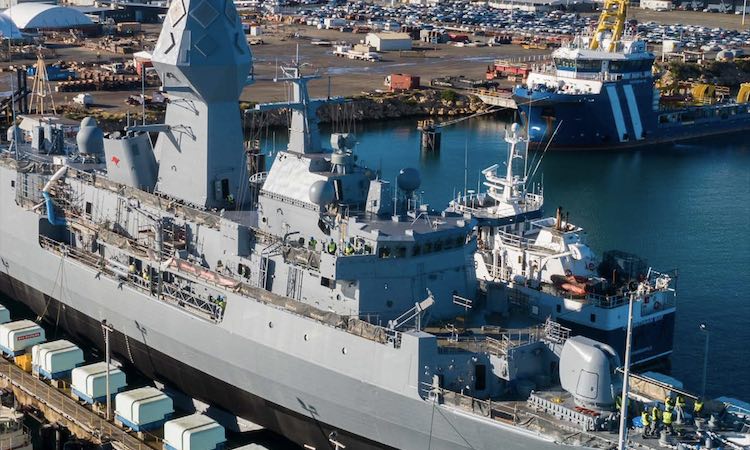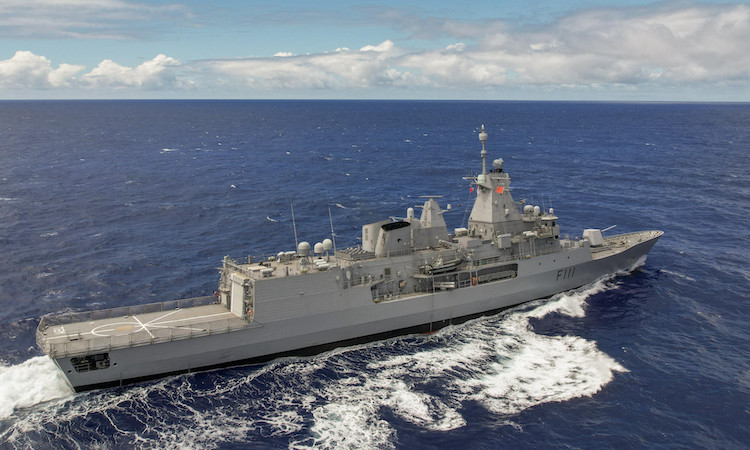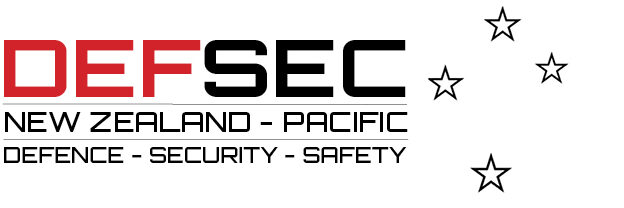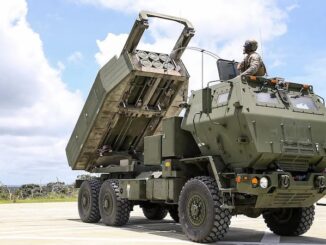
The Defence Capability Plan’s signalling of like-for-like replacement for the Anzac frigates has implications for decisions around the rest of the fleet, writes maritime capability specialist and former Royal New Zealand Navy Officer Andrew Watts.
My initial reaction on reading the recently released 2025 Defence Capability Plan (DCP) was slight disappointment. Yes, there is a definite commitment to maintaining meaningful naval forces, but I thought the DCP could have gone further in signalling a fresh approach to force design.
On reflection, however, I realised that there is much to be encouraged by and considerable scope for innovation.
In past articles in this magazine, I have discussed the potential benefits of a combat and patrol fleet based on a common, modular platform that could be configured with capability modules for missions across the combat, patrol, and humanitarian assistance/disaster relief spectrum.
However, the DCP signals that the frigates will be replaced with “comparable contemporary frigates”. Although it also discusses the advantages that might accrue from a common patrol/combatant platform, specifying frigates for the combat element makes this impractical on acquisition and sustainment cost grounds.
“Designs that tightly couple mission and platform systems will at some point require expensive and technically risky half-life upgrades, regardless of whether or not we are able to adopt the same upgrade package as the Australians.”
The DCP text mentions Australia 33 times in the context of the alliance and the need for interoperability, including the following statement:
“To drive innovative approaches, and increase interoperability (particularly with Australia), each individual investment business case prepared pursuant to this DCP will now start with four key considerations: 1 what is the Australian approach, and is there any reason for New Zealand to take a different approach…”

HMAS Perth with CEAFAR phased array radars installed as part of the ASMD Project. Image: Australian Government.
SEA 3000: Pros and cons
Under the SEA 3000 General Purpose Frigate project, Australia will acquire between eight and eleven frigates to replace the Anzac class. There are a number of reasons why participation in SEA 3000 should be the benchmark against which options for the combat element of the Maritime Fleet Renewal program should be assessed, aside from compliance with the above statement from the DCP.
Firstly, SEA 3000 will be one of the largest naval acquisition programs anywhere in the world. The more ships acquired, the lower the acquisition costs for both Australia and New Zealand. These savings are not trifling – the reduction in the unit procurement cost of each ship when numbers are added to the programme is astounding.
Secondly, we would be able to continue the shared training and logistics arrangements that have proved so advantageous in the sustainment of the Anzac class, notwithstanding variations in configuration between our ships and the Australian.
Thirdly, the interoperability goals detailed in the DCP would be more than met.
Last, and by no means least, we would be acquiring highly credible and effective combat platforms that could add appreciably to the collective deterrence operations likely to be needed in future if geopolitical developments in our region continue on their current trajectory.
As always, there is a debit side to the ledger. Firstly, there is cost. SEA 3000 ships will be expensive, regardless of the option selected and the economies of scale delivered by a large production run. Operational research has repeatedly demonstrated that a minimum of three ships is needed to ensure the reasonable availability of one fully effective ship at any given time, and the long-term sustainability of the naval combat workforce.
Secondly, our Australian friends have shown a propensity to change procurement tack, regardless of the expense. This is not a criticism, but it should be noted that the Australian capacity to bear the cost of changes in procurement direction exceeds our own by a wide margin.
The Australian Head, Naval Capability has indicated that a SEA 3000 capability upgrade may be considered at some point in the program. This might include replacing the combat management system with the Australian standard 9LV 453, and the radars with the admittedly excellent, but highly expensive, CEAFAR.
If this were to occur and we couldn’t afford or didn’t wish to follow suit, our ships would become partial orphans as our current Anzac class did soon after entering service, when the Australians began their ASMD upgrade program. We would thus lose some of the sustainment advantages described above.
Thirdly, neither of the two SEA 3000 contenders is modular to any appreciable extent. They are thus inherently less flexible than the modular options I have discussed in previous articles. In addition, a fully modular design would allow obsolescence to be managed by replacing mission modules, allowing the ship to remain available for operations that didn’t require that module.
Designs that tightly couple mission and platform systems will at some point require expensive and technically risky half-life upgrades, regardless of whether or not we are able to adopt the same upgrade package as the Australians. The Anzac FSU has delivered a highly capable package, but the delays and cost increases caused by issues that could not be detected until the ships were opened up for refit should be borne in mind.

HMNZS Te Mana. Image: New Zealand Government.
Arrowhead 140: A contender
If government elects not to participate in SEA 3000, there will be other “comparable contemporary frigate” options available. Most NATO navies have frigate-type programs underway, and joining one of those would deliver acquisition, sustainment, and interoperability benefits. It seems doubtful, however, that those benefits would be on a similar scale to SEA 3000.
A possible exception is the Babcock Arrowhead 140 design adapted from the Royal Navy’s Type 31 frigate. The latter had a target unit procurement cost of GBP250M (NZD563M). Whether or not this target has been achieved is unknown, and it may not include sonar capability, but it represents a dramatic saving against other options.
Arrowhead 140 also incorporates sufficient modularity to provide a meaningful degree of mission flexibility, although not enough to avoid the need for costly mid-life upgrades for primary systems, which are tightly coupled with the basic platform as described above in relation to the SEA3000 contenders. If Arrowhead were selected, the commonsense approach would be to adopt a configuration as close as possible to Type 31 so that common training and logistical arrangements could be set up with the Royal Navy.

Babcock Arrowhead 140. Image: Babcock.
Fleet design implications
If traditional multi-function frigates are acquired, additional ships will be needed for those naval missions that cannot be performed by frigates, either because frigates are too expensive to form the basis of an entire fleet, or because their non-modular nature limits their ability to perform the full range of missions required by policy.
In designing a fleet, naval missions should be viewed in their totality without arbitrarily separating combat and patrol functions and assuming that separate ship types are required for each. Modular technology supports this by enabling combat capabilities such as Anti-Submarine Warfare (ASW) sensors and Mine Countermeasures (MCM) capability to be carried in less expensive ships that can efficiently perform long duration patrol and maritime security operations, enabling “force multiplication” across the combat/patrol spectrum.
If “comparable, contemporary frigates” are to be acquired, the balance of naval missions could thus be performed by an innovative, modular, multi-purpose platform.
There are two ways in which this could be achieved. Firstly, if we go down the SEA 3000 route, we could look at the smaller, modular offerings of whichever supplier is selected for the frigate requirement. Mitsubishi Heavy Industries, supplier of the Mogami class contender, are delivering an innovative modular OPV to the Japanese Maritime Self Defence Force.
TKMS, the other contender with their MEKO A200 offering, have a family of smaller light frigate, corvette, and OPV types that might be similarly adaptable. In this way we could create the fleetwide system commonality that the DCP identifies as essential.
Alternatively, we could seek a truly innovative platform designed around modularity and the support of autonomous vehicles. Austal Ltd [1] is one of the world’s leading suppliers of multi-hull commercial and naval technology, and they have core designs that could be adapted to our needs.
Multihulls offer benefits in terms of internal capacity, seakeeping, fuel efficiency and crewed and autonomous aircraft operation [2] that in my view must be considered. Systems commonality would be more difficult to achieve than with the first option discussed above, but not impossible.
It may even be possible to build such ships in New Zealand – we are not short of high-quality fabricators and suppliers, although we would need external help with systems integration and specialist warship naval architecture.
In the unlikely event that Defence was to opt for an innovative, multihull solution and the modular concept was to fail technically, the worst possible outcome is that we would be left with highly capable patrol platforms with the inherent flexibility delivered by large internal volume, very large flight decks, and excellent sea keeping and endurance capability. A serious look at an innovative, modular, multihull platform to supplement the comparable, contemporary frigates seems indicated.
Sealift capability
That leaves the all-important sealift capability. Although for some reason sealift is only mentioned once in the DCP, and that in a very general way, it is a pillar of NZDF joint capability. We must be able to carry our land forces and their equipment to where they are needed.
Airlift is a vital component of our projection capability, but sealift is indispensable when heavy lift is required. It allows land forces to deploy to a region and be held in readiness aboard ships without encroaching on another nation’s sovereign territory, to be landed if, when, and where needed – a valuable characteristic in the politically charged situations in which land force projection is necessary.
Finally, a sealift capability able to project land forces over the shore without any kind of port facility dramatically increases maneuver options for all types of operation.
DCP19 anticipated the acquisition of large amphibious ships known as LPDs [3]. LPDs have a floodable well dock in the stern which enables landing craft operations in sea states where ships without a dock, such as HMNZS Canterbury, are severely constrained. An LPD is a highly capable ship, well suited to our needs, but the cost per ship could approach or even exceed that of a frigate.
There is an alternative. The US Navy and the Australian Defence Force are acquiring a type of amphibious ship called an LSM. These 3-5,000 tonne ships discharge their payload directly onto a beach by means of a bow ramp. They can be limited by beach gradient but are much less affected by weather than Canterbury and probably less affected than LPDs. Critically, they can unload and reload in a fraction of the time taken by other kinds of amphibious ships.
An LSM would cost much less than an LPD – it might be possible to acquire two without unduly straining the capital programme. This would provide much greater availability for contingency operations such as disaster relief than is possible with a single ship sealift force.
Even more significantly, joining the Australian LSM project would be fully aligned with Plan Anzac, under which the Australian and New Zealand armies aim to achieve interchangeability – a level beyond interoperability.
In summary, acquiring comparable contemporary frigates creates a need for a complementary type of ship that can operate economically in the patrol part of the mission spectrum. Modular technology could enable these ships to perform a wide range of missions including ASW and MCM, thus supplementing the combat force.
Joining the Australian LSM project could provide enhanced sealift capability at a lower cost than other options, while supporting the interchangeability aims of Plan Anzac. In summary, DCP25 isn’t at all disappointing, but time will tell if the promise it contains can be fulfilled.
[1] The author consulted to Austal Ltd for a period of eight months in 2023/24, and hopes they remain engaged in Maritime Fleet Renewal.
[2] The largest shipboard flight deck in the US Navy apart from aircraft carriers is that aboard the trimaran LCS2 class.
[3] This is a NATO designator for amphibious transport (dock); it is not an acronym.








Be the first to comment